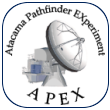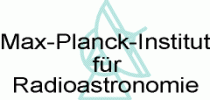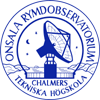APEX telescope efficiencies

The table is adapted from A&A 454, L13-L16 (2006). Beam sizes (θmb) have been determined by deconvolving planet scans. The listed efficiencies are forward efficiency (ηf), aperture efficiency (ηa), main beam efficiency (ηmb), and Moon efficiency (ηM). The uncertainties of the listed efficiencies are expected to be 5-10%.
The Kelvin to Jansky conversion factor for the APEX antenna is given by 24.4/ηa Jy/K. Hence, for the aperture efficiencies in the table above we obtain the following Kelvin to Jansky conversion factors. Also added below are the estimates for the frequency bands of coming receivers.| Instrument | Frequency [GHz] | Kelvin to Jansky conversion [Jy/K] | ηmb | Comment |
|---|---|---|---|---|
| APEX-1 | 230 | 39 | 0.75 | Estimated from the Ruze formula |
| APEX-2 | 352 | 41 | 0.73 | |
| APEX-3/FLASH-I | 464 | 48 | 0.60 | |
| CHAMP+-I | 650 | 53 | 0.56 | Estimated from the Ruze formula. See also note below. |
| FLASH-II/CHAMP+-II | 812 | 70 | 0.43 | See note below |
| APEX-T2 | 1300 | (120) | (0.25) | Estimated from the Ruze formula |
Note 1: Efficiency measurements listed in this page can be used as a reference but are a bit outdated. A new toolbox is under development and updated values will be provided soon in this page.
Note 2: The CHAMP+ efficiencies vary from year to year and in order to get the most accurate number please refer to the CHAMP+ web pages at MPIfRAccording to the Ruze formula the aperture efficiency, ηa, will degrade with shorter wavelength, λ, as
-
ηa (λ) = ηa (∞) exp(-16π²σ²/λ²)




